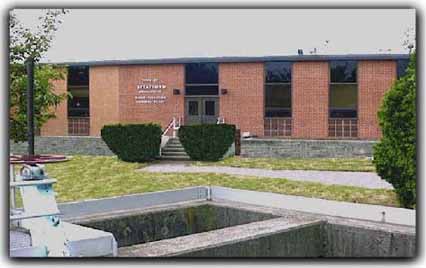By Barbara Heimlich
Editor
Sources: Town of Stratford WPCA Minutes; Richard Chumney, Staff Writer, CT Post
At the November Stratford Water Pollution Control Authority meeting and public hearing, Ms. Haley Wallace of Putney spoke in favor of the Main Street Putney Sewer Extension. It was authorized to proceed, conditioned on funding from Revolving Sewer Fund. Ms. Wallace was the only speaker during the public hearing.
In new business, the Water Pollution Control Federation (WPCF) Perimeter Flood Protection Plan conducted a public information presentation by consultants with GZA GeoEnvironmental, Inc., a Massachusetts-based engineering firm hired to help lead the project. It is a national consulting firm with over 750 employees in 32 offices, and is a 100% employee-owned company.
David Barstow and a fellow associate of GZA described the Coastal resiliency WPCF perimeter floodwall protection project located at 105 Beacon Point Road. A FEMA grant has been awarded to the town. Messrs. Karp and Barstow answered all questions and concerns presented.
Barstow told the WPCA the wall would be 18 feet high at its tallest point. The treatment plant, which has the capacity to process up to 11.5 million gallons of sewage a day, sits in a flood zone on the banks of the Housatonic River, making it especially vulnerable to rising sea levels.
The facility is shielded by a series of earthen dikes that date to the early 1970s, but the protective barriers may not be strong enough to withstand increasingly intense storms that inundate coastal areas.
Local officials are weighing spending $16.7 million to build a large floodwall encircling the town’s sewage treatment plant, an effort aimed at protecting the riverside facility from destructive storms.
The yet-to-be-built structure would be about five feet taller than the highest point on the existing dikes, ensuring the treatment plant would be protected from flooding brought by a 500-year storm, Barstow said. “The plant currently handles most of the waste water for the town,” he noted. “As you can imagine, if something happens to the plant, it’s going to be a big cost impact to make the repairs.”
Town officials have long eyed increased flood protections for the treatment plant, which could be forced to temporarily shut down and stop processing sewage if a storm submerges the facility in floodwaters.
A permanent floodwall for the facility was among the recommendations included in a Town of Stratford 2016 Coastal Residency Plan, created to outline potential solutions to the town’s growing flooding issues.
According to data from the U.S. Army Corps of Engineers, the sea level of the Long Island Sound at Stratford is on the rise and is projected to increase between 0.4 feet and 2.2 feet by 2065.
Barstow said the floodwall, which would be built out of reinforced concrete and have an exposed height of four to six feet, would be about 3,100 feet in length and would incorporate parts of the dikes.
“We’re looking to improve the existing dikes and reuse those as much as we can to reduce costs,” Barstow said.
Barstow said his team is aiming to get authorization to move forward with the project from the state Department of Energy and Environmental Protection by March and start construction in May. He noted the work is expected to take two years to complete.
Once the new perimeter is finished, the facility would be accessible through a large floodgate that could be closed ahead of storms. Barstow said the gate would employ steel braces stored on site to ensure the barrier is watertight.
Town Engineer John Casey said the town plans to use $2.7 million in grant funding that was awarded in 2020 by the Federal Emergency Management Agency for coastal resiliency efforts to help pay for the flood-wall.
A Resolution appropriating $16,730,000 for the Floodwall Project and recommending the issue of $16,730,000 bonds and obligations of the Town to meet said appropriation was accepted.
The WPCA voted to authorize the project and the town council unanimously approved the first reading of an ordinance issuing $16.7 million in bonds to fund the construction work. The project is expected to start as soon as this spring and take about two years to complete.
The council is expected to revisit the floodwall project and consider a second and final reading during its December 9th meeting.



